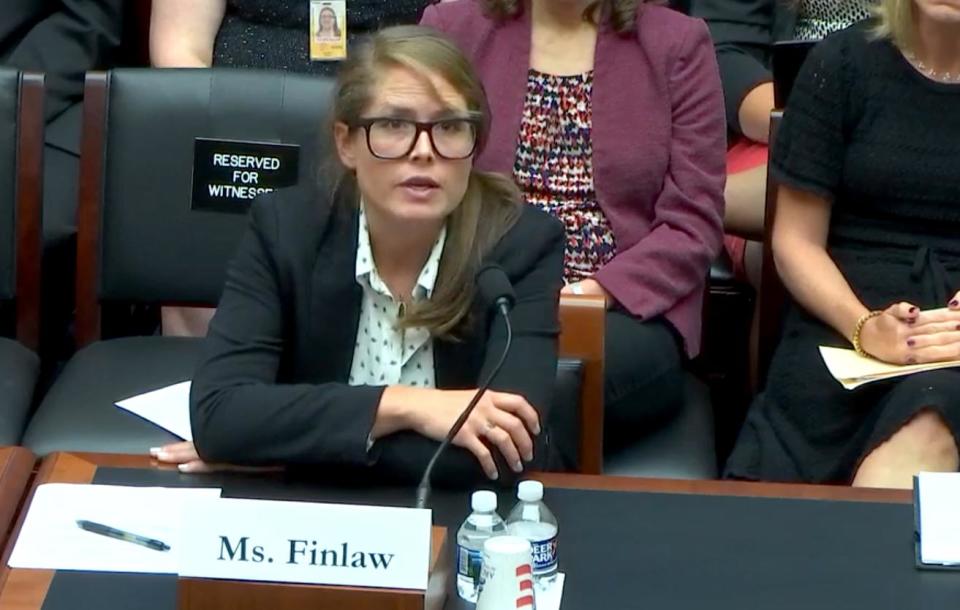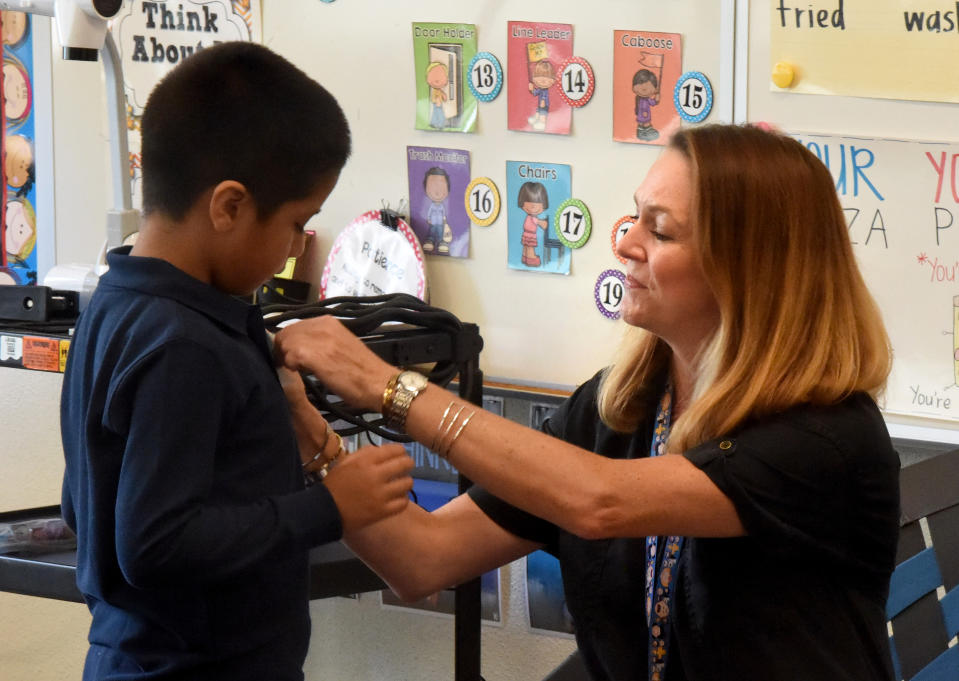‘I was misled’: Public school teacher tells Congress about student debt nightmare
Congress designed the public service loan forgiveness (PSLF) program to reduce the student debt burden for thousands of borrowers with a decade of service in government or nonprofit jobs. But with a rejection rate over 99%, the program has been a clear failure.
One of 99% was Kelly Finlaw, a public school teacher in New York who recently testified about her experience with FedLoan Servicing.
“I was misled. Not just by FedLoan, but by other servicers. I was lied to,” Finlaw testified to Congress last week. “In what other sectors of government are you able to lie to the people that you’re servicing and then holding them responsible for the lies that you told them?”

‘I did what I was asked to do’
Created by Congress in 2007, the PSLF program — as part of the College Cost Reduction and Access Act of 2007 — was designed to help various public sector employees, from teachers to public health and law enforcement public service workers.
The program promised to forgive student debt for those who worked with public service employers for at least 10 years, while making 120 payments via eligible plans. In 2017, many of those borrowers qualified. But only 1% had their loans forgiven, according to the Government Accountability Office (GAO).
“I did what I was asked to do. I called, I made my payments on time. I paid every month,” Finlaw said, later adding: "After 10 years of making student loan payments, October 2017 was my month — my light at the end of the tunnel. I remember standing in my living room when the light at the tunnel went dark."
Responding to this extreme denial rate of the program in 2018, Congress approved funding to expand the number of borrowers in an initiative called the Temporary Expanded Public Service Loan Forgiveness (TEPSLF).
But as of May this year, the DOE had received 54,000 requests for TEPSLF and only approved 1% of these requests.

“We recognize that the many restrictive eligibility requirements of PSLF and TEPSLF make the program difficult for borrowers to understand and navigate,” Jeff Appel Federal Student Aid U.S. Department of Education wrote in his testimony. “We are absolutely committed to helping borrowers navigate this complexity.”
This summer, Finlaw joined the American Federation of Teachers (AFT), the second-largest teachers union in the U.S., in a lawsuit that calls on the U.S. government to fix the PSLF program.
“The very agency that is supposedly the champion of our nation’s education system has failed to live up to its role in administering this Program,” asserted the lawsuit, which was filed in July.
According to the AFT, thousands of teachers who are union members may be affected by the lawsuit.
“Large numbers of borrowers have pursued careers in public service, sometimes at lower pay than in the private sector, with the hope of one day achieving loan forgiveness through the PSLF program,” Melissa Emrey-Arras, the GAO’s director of education workforce and income security issues, wrote in her testimony. “Education needs to take action to better serve these borrowers and help smooth their long road towards loan forgiveness.”

‘I’m going to die with this debt’
As the first batch of borrowers qualified for forgiveness in 2017, including Finlaw, the hidden complexities became apparent.
“The regrettable, but unsurprising… result of all of the problems identified above, is that the number of borrowers who have successfully met all program requirements and received PSLF relief to date, in the initial years of eligibility, is low,” Appel wrote.
He said the most common reasons for rejection were not making 120 qualifying payments (55% of the cases), missing information on the application (24%), and not having eligible loans (15%).
And “among applicants with outstanding eligible loans, 80 percent had not even been in repayment status long enough – 10 years – to have qualified,” Appel added.
The AFT and Finlaw alleged the DOE and contracted loan servicers like FedLoan that didn’t properly inform applicants about the steps they needed to take to properly qualify.
“I have to resign myself that I’m going to die with this debt,” Finlaw said. “I have to accept that. I had to do this to get to where I am. I had no other option, and that’s my reality.”
—
Reggie Wade is a writer for Yahoo Finance. Follow him on Twitter at @ReggieWade.
Aarthi is a writer for Yahoo Finance. Follow her on Twitter @aarthiswami.
Read more:
'Horrendous situation': America's teachers are suing the federal government over student loans
U.S. teachers increasingly struggle to find affordable housing: Study
Presidential candidate Pete Buttigieg: ‘I have six-figure student debt’
Bernie Sanders unveils sweeping student debt cancellation plan
Read the latest financial and business news from Yahoo Finance
Follow Yahoo Finance on Twitter, Facebook, Instagram, Flipboard, SmartNews, LinkedIn, YouTube, and reddit.